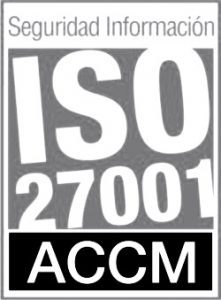In the digital age, smart cities have become a beacon of innovation, where connectivity and technology intertwine to address crucial urban challenges. One of the fundamental tools driving this revolution is the Internet of Things (IoT), allowing cities to take concrete steps towards sustainability and savings. In this article, we will explore 10 ways smart cities are using IoT to transform their environments, promoting greener and more efficient practices.
10 ways in which the IoT increases the sustainability of Smart Cities
1. Energy Efficiency with IoT
In the pursuit of sustainability, smart cities are taking a bold step towards energy efficiency through the implementation of smart lighting. IoT sensors built into streetlights automatically adjust light intensity based on environmental conditions and the presence of people. This approach not only improves safety, but also significantly reduces energy consumption, marking the first step towards a more sustainable future.
2. Traffic Management: IoT Redefining Urban Mobility
At the heart of every smart city lies an IoT-optimized traffic management system. Traffic sensors collect data in real time, allowing dynamic adaptation of traffic lights and better vehicle flow. This approach not only reduces congestion, but also reduces greenhouse gas emissions, creating a cleaner, healthier environment.
3. More efficient and intelligent Waste Management
Waste management is a cornerstone of urban sustainability, and this is where IoT technology shines. Smart containers equipped with sensors allow real-time monitoring of the filling level. This information is used to optimize collection routes, reducing the frequency of trips and, therefore, emissions. A decisive step towards environmental sustainability.
4. Real-Time Environmental Monitoring for a healthier city
The quality of air and water is essential for the health of a city and its inhabitants. IoT-based air and water quality sensors provide real-time data, enabling rapid response to environmental issues. This constant monitoring not only ensures a healthier environment, but also sets a high standard for sustainable natural resource management.
5. Efficient public transportation thanks to IoT
Smart cities are taking a turn towards more efficient public transportation thanks to intelligent transportation systems based on IoT. Optimizing routes and schedules not only reduces waiting times, but also improves the efficiency of the system, encouraging more people to opt for public transport instead of private vehicles. This change contributes significantly to sustainability and savings.
6. Smart and sustainable urban gardening
As in agriculture, the combined use of IoT technologies allows for more efficient and sustainable maintenance of green spaces in cities.
Smart Garden is OdinS’ solution for parks and gardens. In addition to optimizing the management of water through various AI algorithms, this solution provides infrastructure with the necessary elements to ensure that administrations have all the data on green areas that results in the climatic and social well-being of the citizen.
7. Efficient Use of Water with Smart Irrigation based on IoT
Water, a precious resource, finds more efficient management thanks to smart irrigation based on IoT. Smart irrigation sensors automatically adjust irrigation based on weather conditions and specific plant needs. This approach not only preserves water, but also promotes more sustainable use of this vital resource.
8. Sustainable Constructions with the Help of IoT
Sustainable construction is a fundamental pillar of smart cities. IoT systems in building management allow real-time monitoring and control of temperature, lighting and other aspects. This not only improves the energy efficiency of buildings, but also reduces the environmental impact of urban infrastructure.
9. Citizen Participation Facilitated by IoT Platforms
Smart cities encourage citizen participation through IoT-based platforms. Applications and systems allow citizens to report environmental problems, such as water leaks or pollution. This citizen collaboration not only improves the effectiveness of local authorities, but also strengthens community commitment to sustainability.
10. Circular Economy: IoT Driving Reuse and Recycling
The circular economy is essential for long-term sustainability, and smart cities are taking this approach with the help of IoT. Waste tracking sensors allow effective tracking of materials, facilitating reuse and recycling. This closed resource cycle contributes to sustainability and reduces pressure on landfills.
In conclusion, smart cities are using the power of IoT to transform urban sustainability and achieve significant resource savings. From efficient energy management to promoting sustainable agricultural practices, each IoT application marks another step towards a greener, more conscious urban future. The smart city revolution not only redefines the way we live in urban environments, but also sets a high standard for the harmonious coexistence between technology and the environment.


